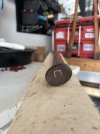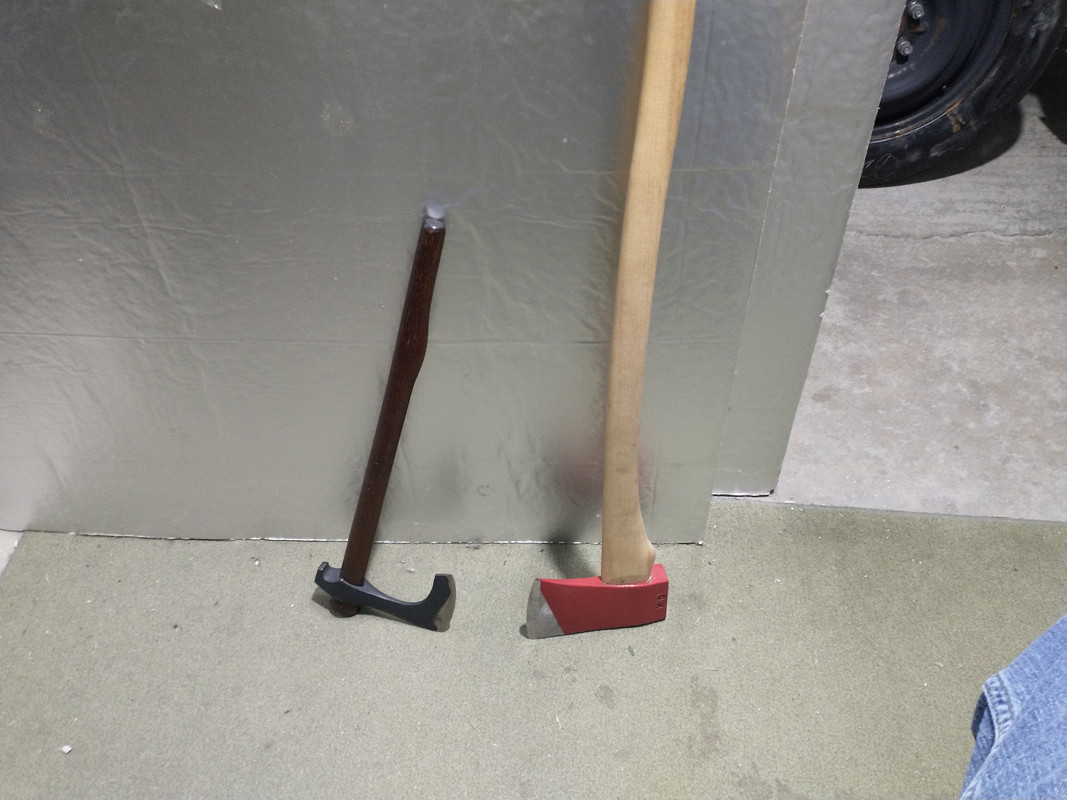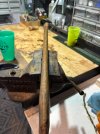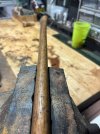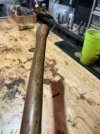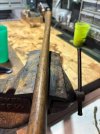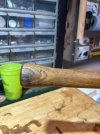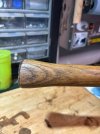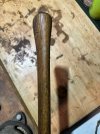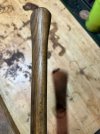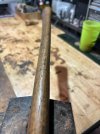PhilipWimberly
Gold Member
- Joined
- Oct 31, 2023
- Messages
- 78
I can't quite get a picture of this that represents how much the palm swell is offset. But it is very distinct and I've not seen this before. Since I only have a few years of dealing with vintage axes and handles, finding something new is not usually a big deal, but this characteristic seems so freaking useful, I'm really surprised it doesn't happen a LOT!
It is a short saddle axe handle (cruiser) and it is sitting with the tongue flat on the blank in the picture. The entire handle is perfectly straight until the swell -- and then a substantial offset that impacts the tool in really important ways.
At the very least, if a right hander swung it one-handed, the head would be parallel to the ground in a very ergonomically comfortable way. Much more than a "normal" handle. On a vertical swing, with my left hand on the swell and sliding my right hand with the strike, I get another new (different) ergonomically improved position. I've mimic'd several left-handed versions of swings and the orientations are very different, but possibly still improved for different swings. Not sure about that, though. My gut says righthand only.
It is so potentially useful, I have trouble believing it is rare? Is it? I suspect this makes the handle right or left handed - is this right? It impacts the usage so much, I've even thought it may not be an axe handle at all -- maybe a different tool? Does anyone know?
It is a short saddle axe handle (cruiser) and it is sitting with the tongue flat on the blank in the picture. The entire handle is perfectly straight until the swell -- and then a substantial offset that impacts the tool in really important ways.
At the very least, if a right hander swung it one-handed, the head would be parallel to the ground in a very ergonomically comfortable way. Much more than a "normal" handle. On a vertical swing, with my left hand on the swell and sliding my right hand with the strike, I get another new (different) ergonomically improved position. I've mimic'd several left-handed versions of swings and the orientations are very different, but possibly still improved for different swings. Not sure about that, though. My gut says righthand only.
It is so potentially useful, I have trouble believing it is rare? Is it? I suspect this makes the handle right or left handed - is this right? It impacts the usage so much, I've even thought it may not be an axe handle at all -- maybe a different tool? Does anyone know?

